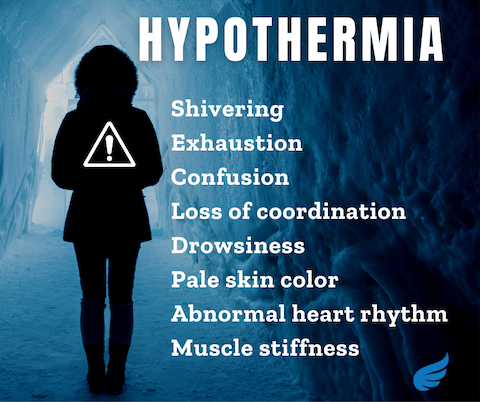Hypothermia
Hypothermia happens when your body temperature drops below 95°F or 35°C (normal body temperature is about 98.6°F or 37°C). Hypothermia is caused by prolonged exposure to very cold temperatures or if a person is wet (from rain, snow, sweat or immersion in cold water) and becomes chilled. The body begins to lose heat faster than it creates, which leads to decreased body temperature. Low body temperature can affect brain functions and make victims are usually unaware of their condition.
Hypothermia is a medical emergency, left untreated, hypothermia can lead to cardiac arrest and death.
Some people are at a higher risk of getting hypothermia:
Babies lose body heat more easily than adults, and don't have the energy reserve to shiver (a natural way to increase body heat).
Children are physically more active than adults (proportionally) and use more body calories, as such they may not realize they are cold when playing outside.
Elderlies gradually lose the ability to control body temperature.
Alcohol or drugs can affect a person’s ability to feel cold. It also affects blood flow and increases body heat loss.
People with certain medical conditions, who take some types of medication (including sedatives, anesthetics, opioids) may be more susceptible to cold temperature.
Common signs and symptoms of hypothermia are:
For adults:
Shivering.
Exhaustion.
Confusion, poor judgment, slurred speech
Loss of movement coordination.
Drowsiness.
Pale skin color.
Abnormal heart rhythm.
Muscle stiffness.
For children:
Bright red, cold skin.
Very low energy.
How to treat hypothermia?
Move to a warm, dry place.
Remove wet clothing.
Dry the victim's skin if wet.
Cover up with dry clothing or a blanket, hat and socks.
Warm the abdomen first.
Don’t apply hot packs directly to the skin.
Give warm liquids to the victim (not too hot).
In any case, if you are uncertain about the signs of hypothermia or about what to do, call 911.

